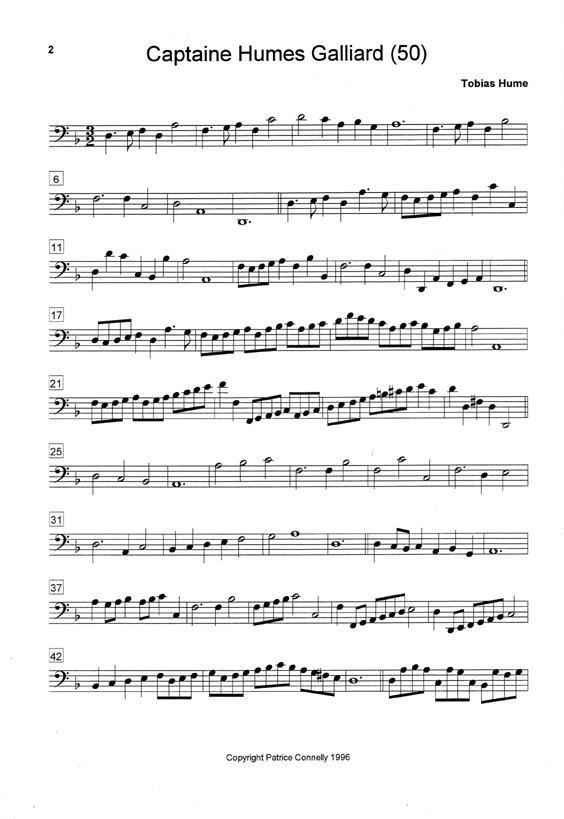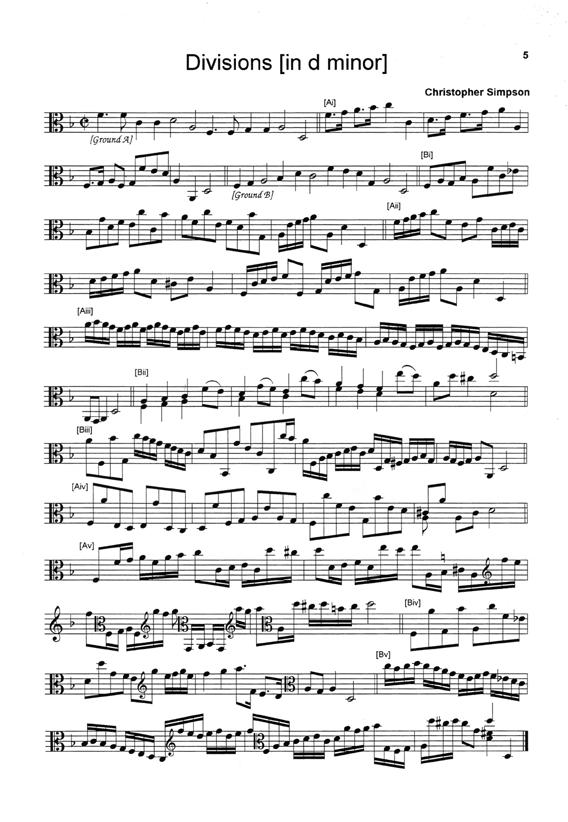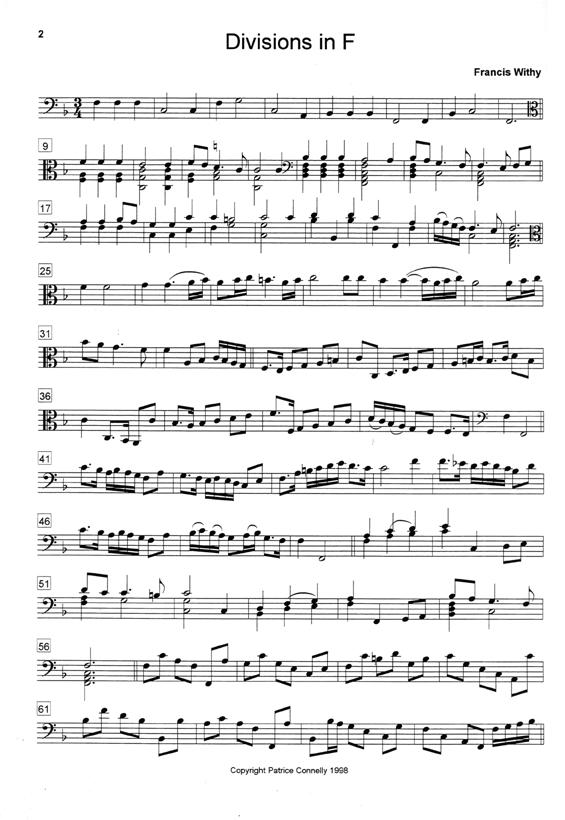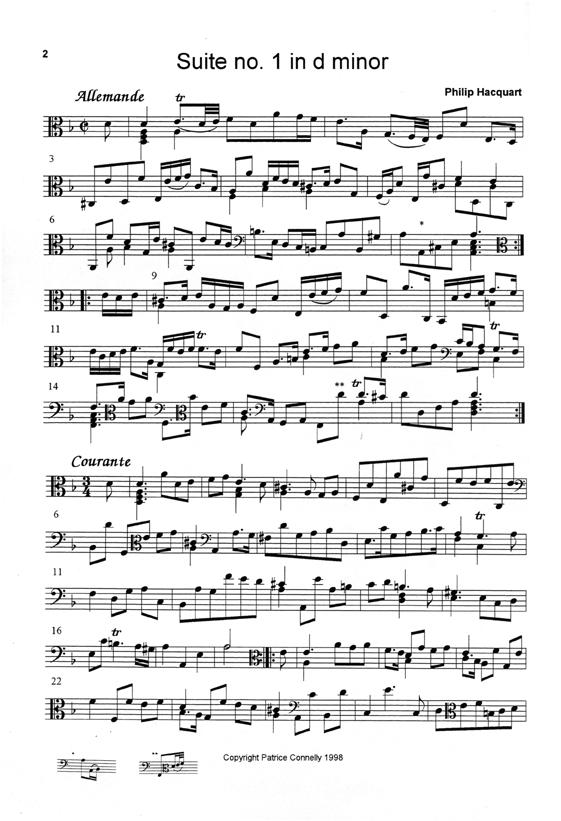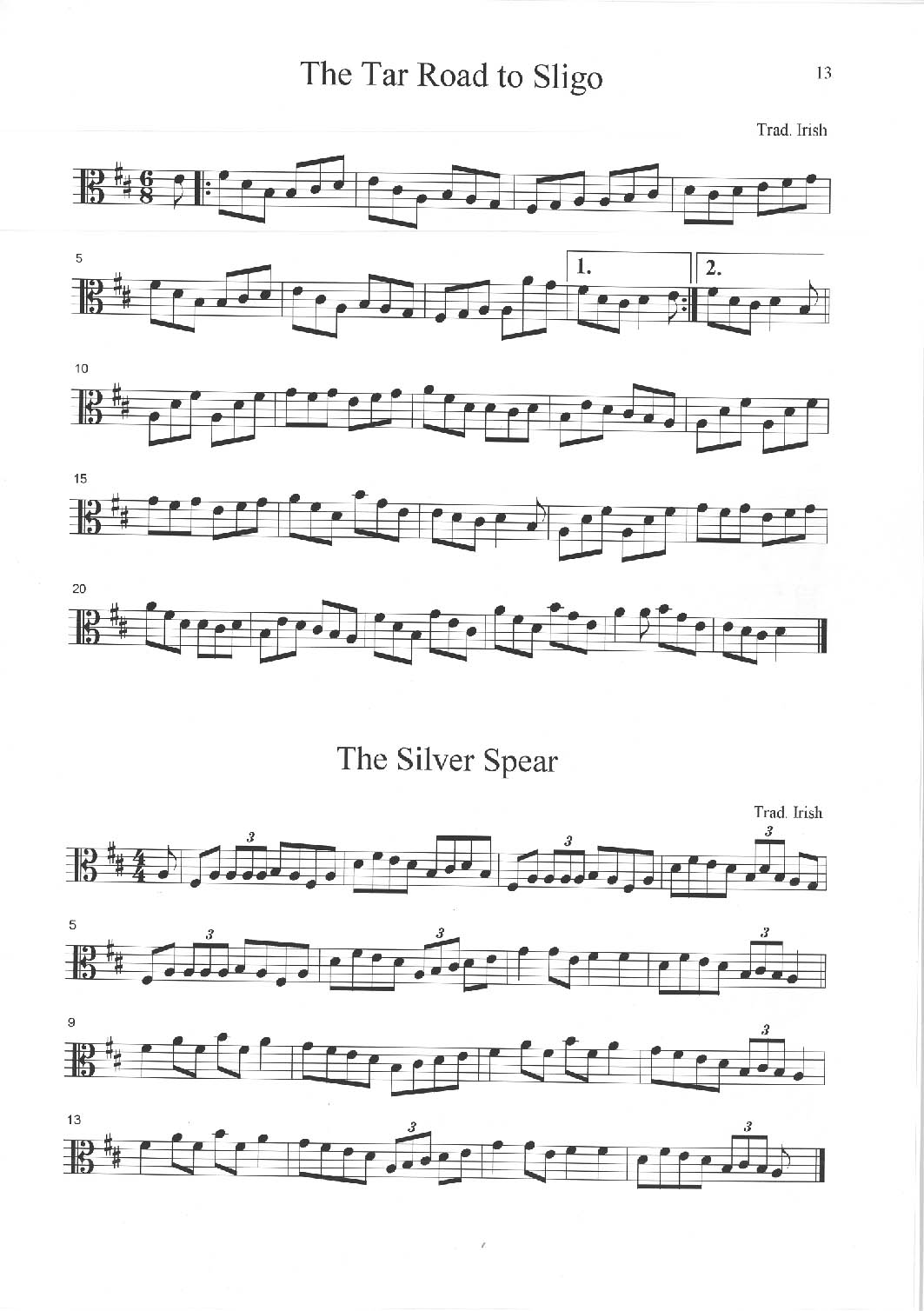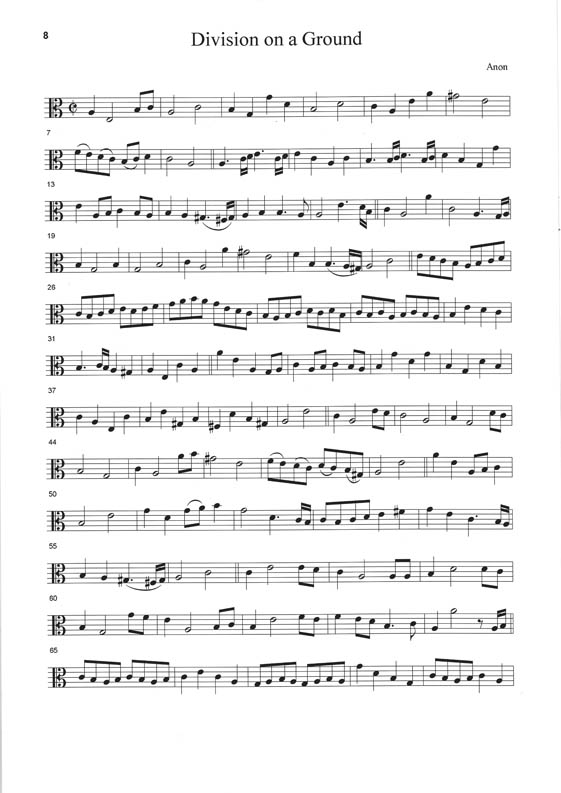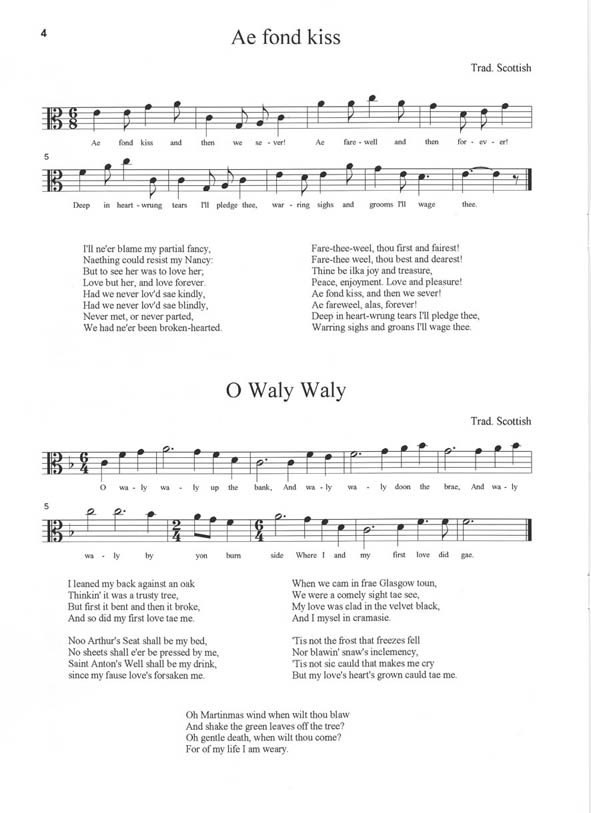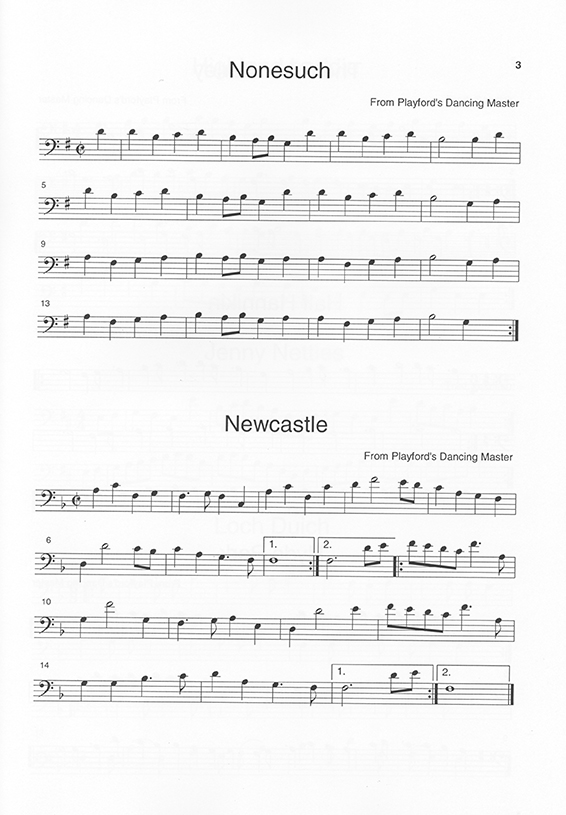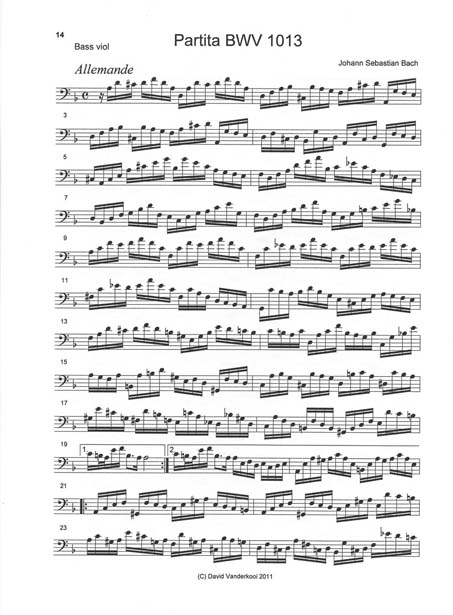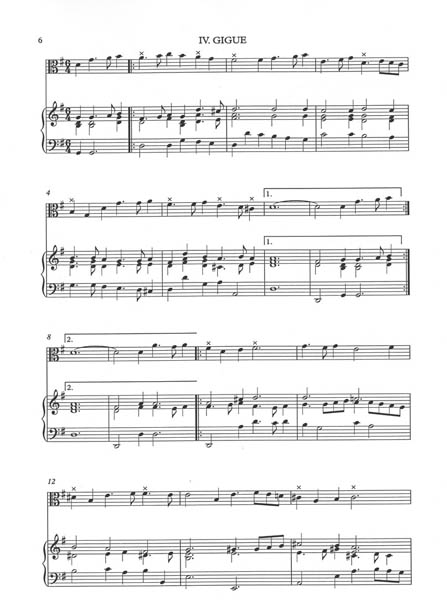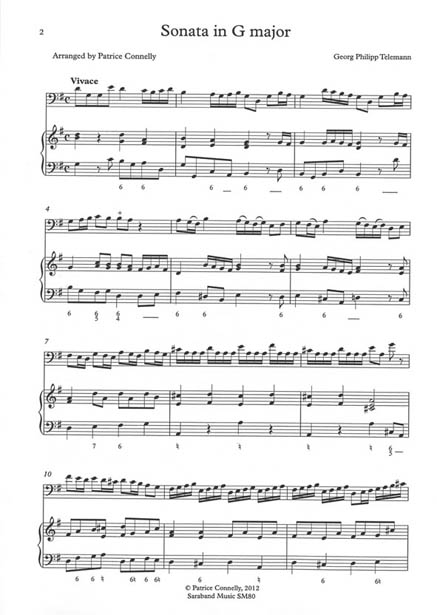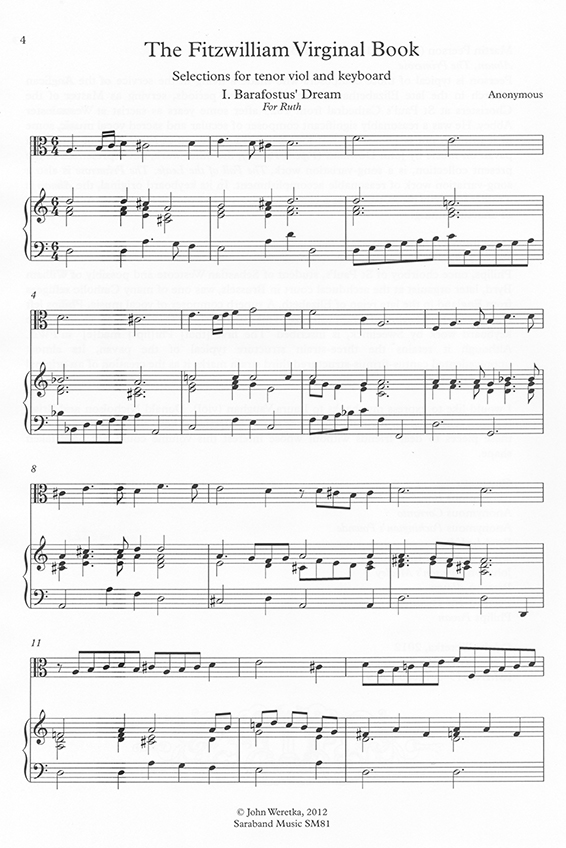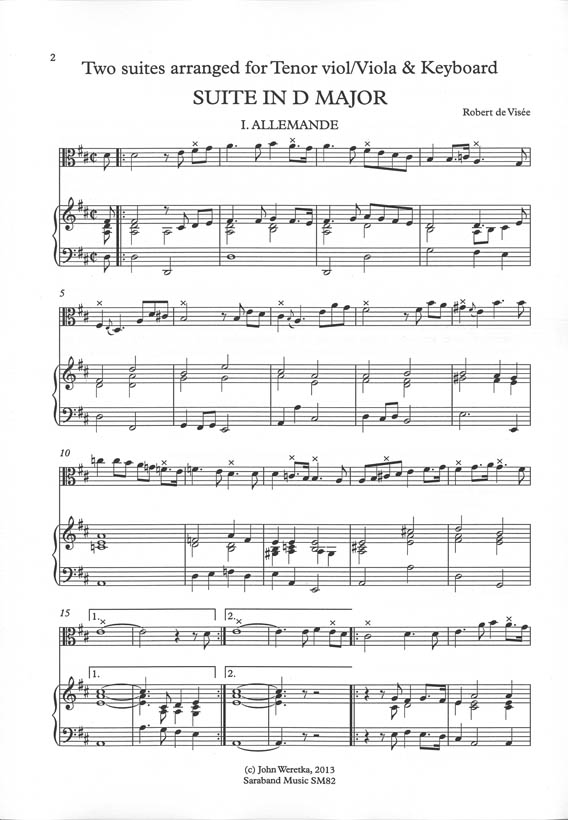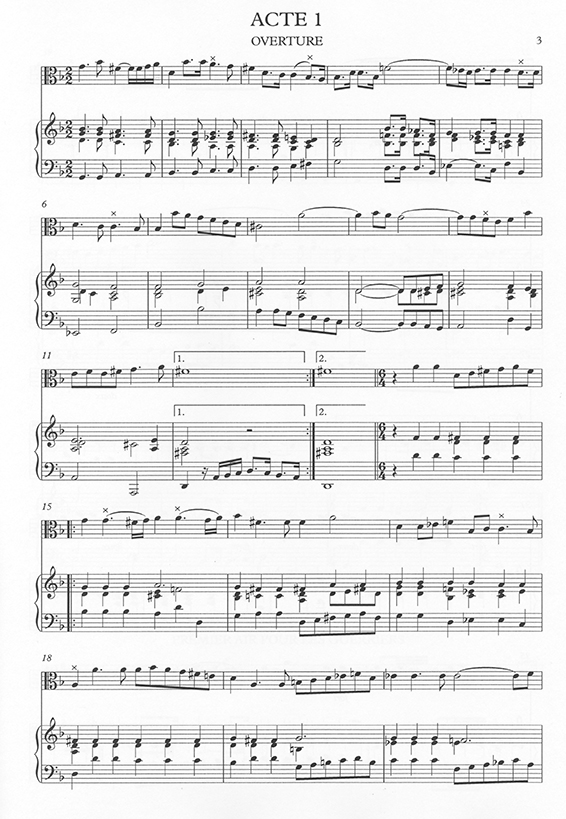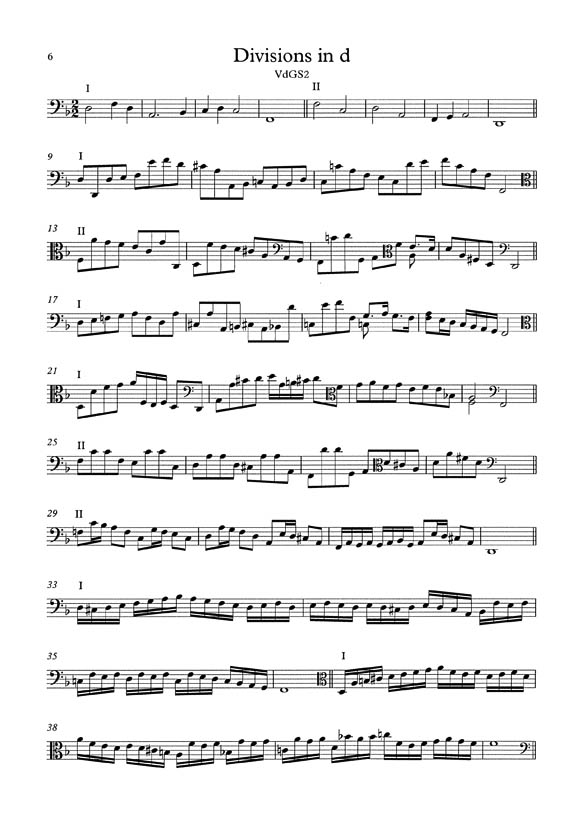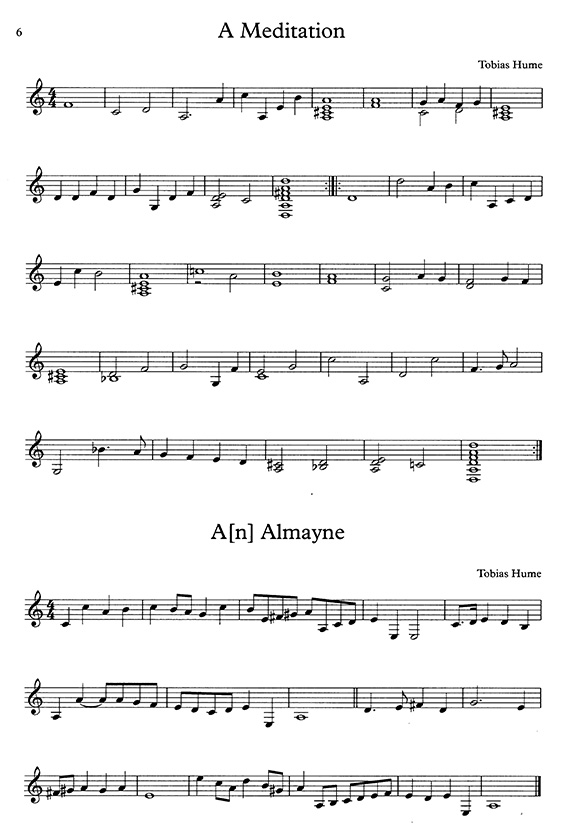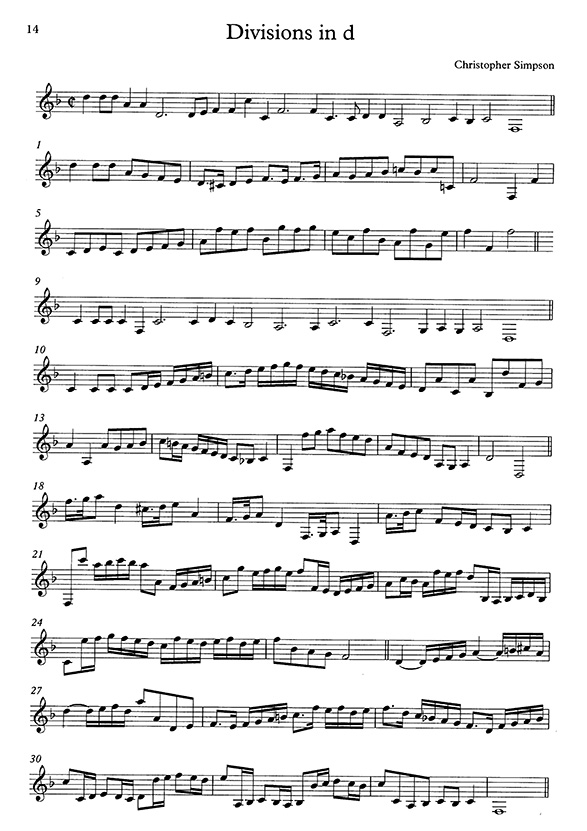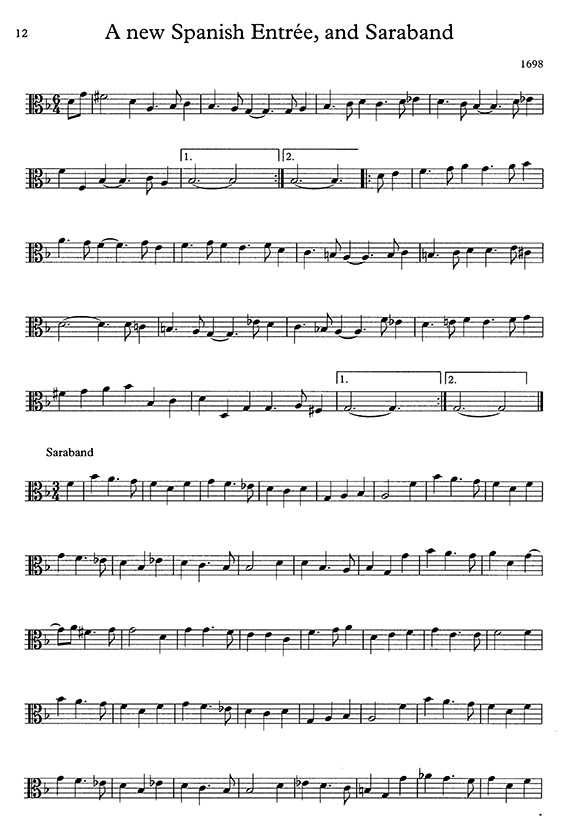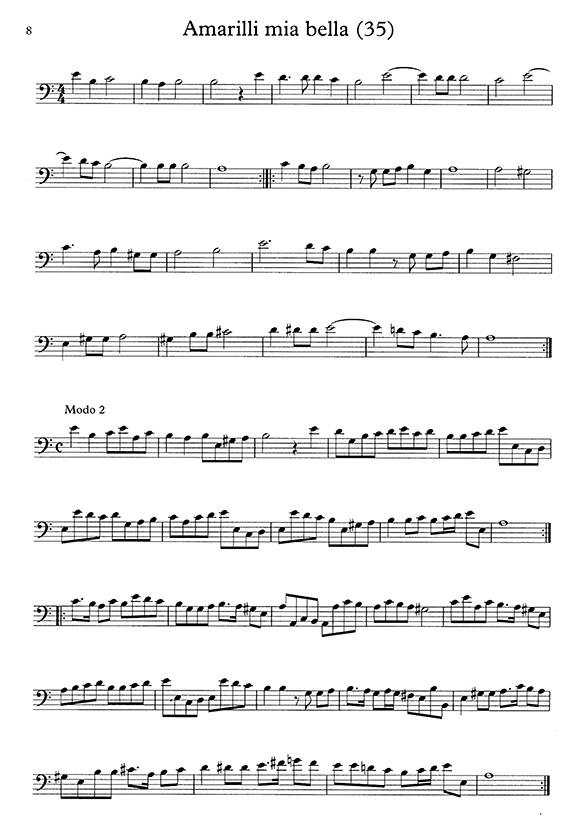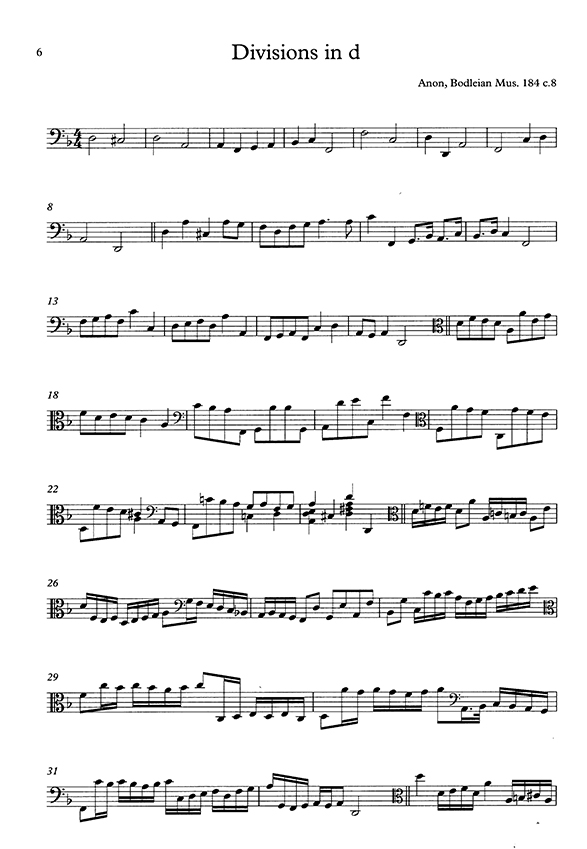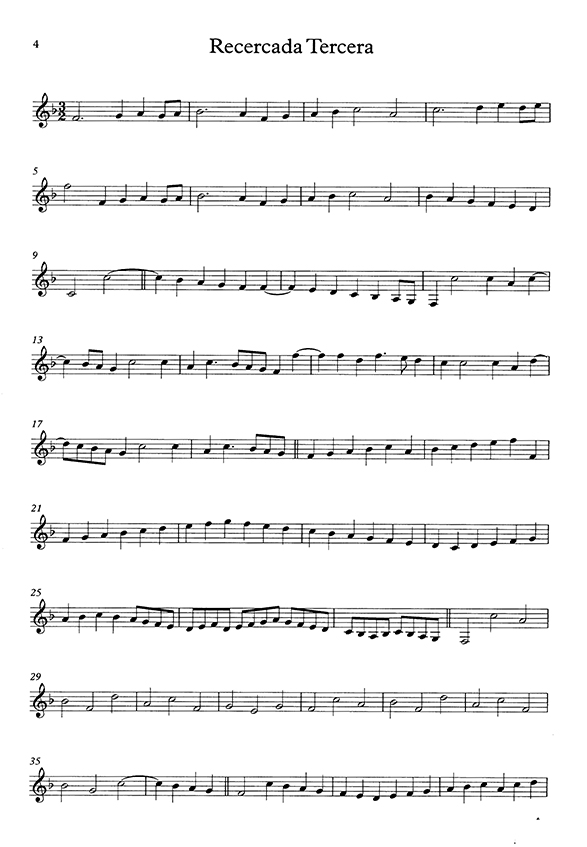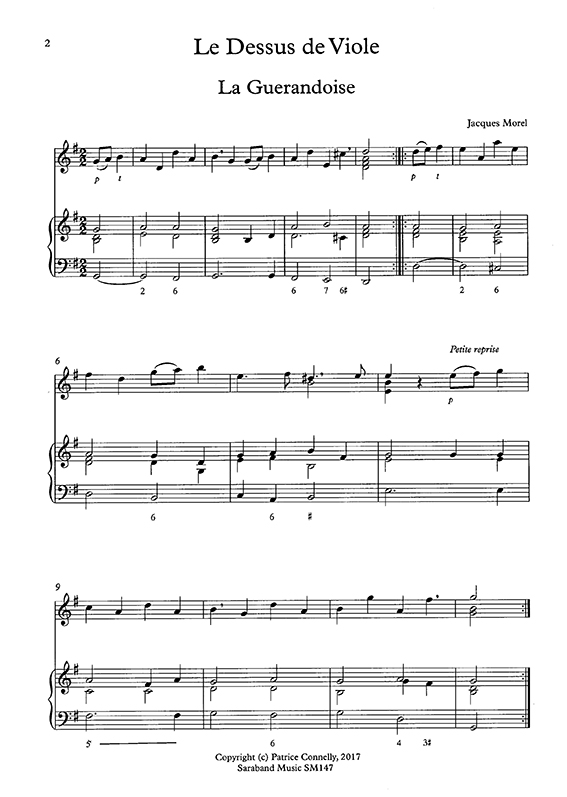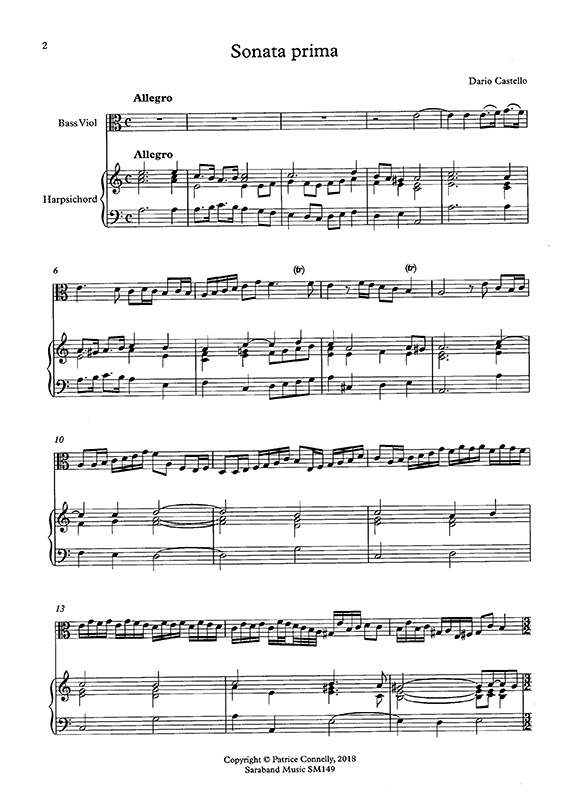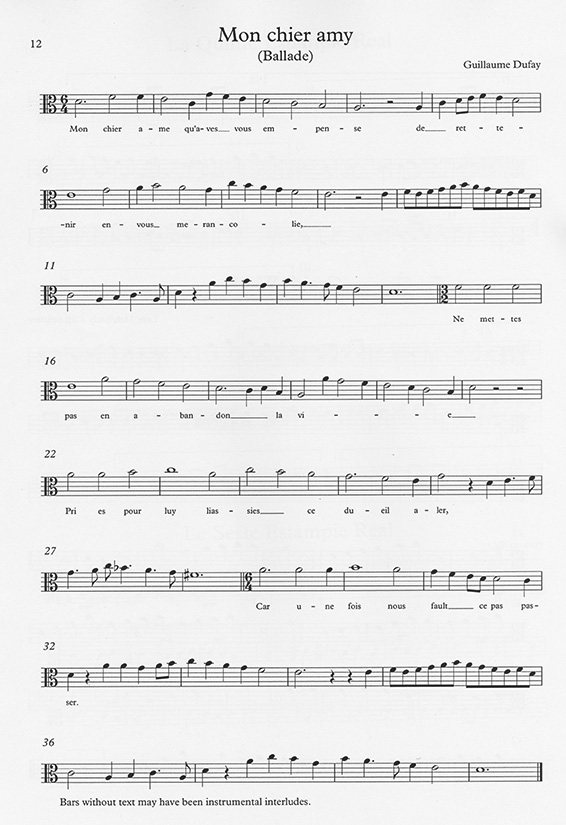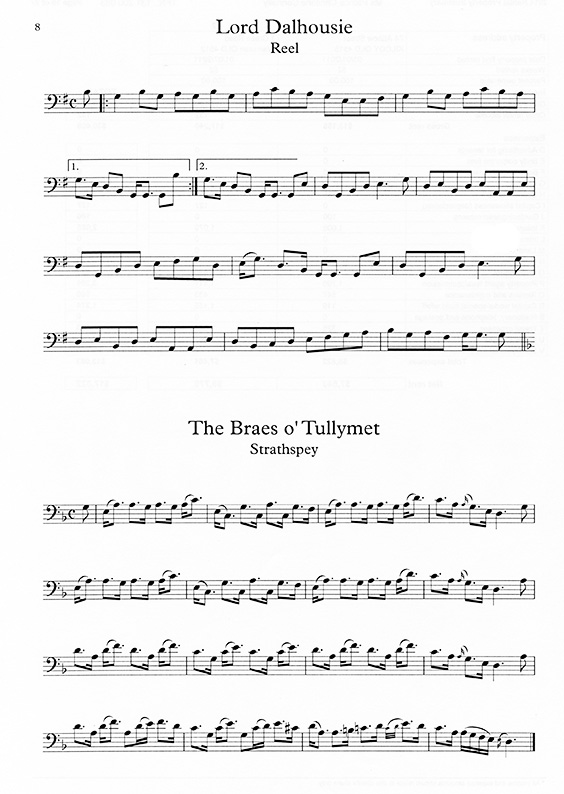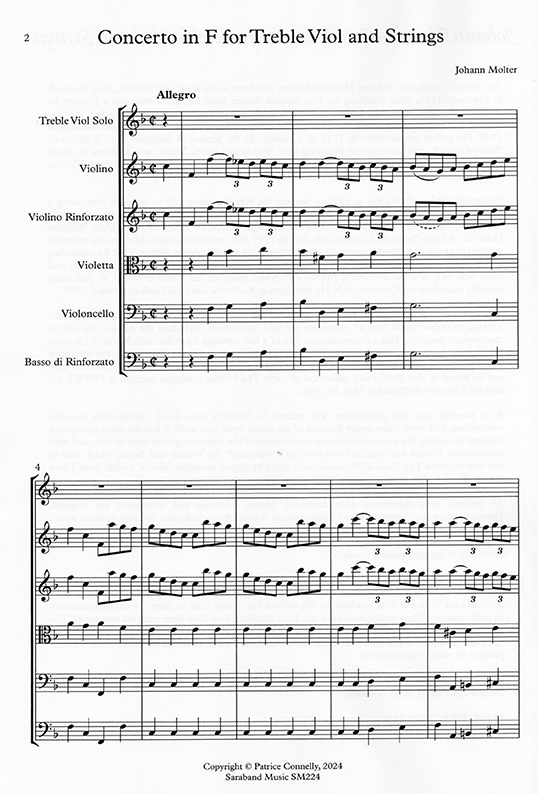Viol Solo Editions


Sample pages have been provided from each edition. These are copyright, and are not necessarily indicative of the standard of difficulty of the whole edition.
Some audio samples have been added to this page.
Prices on this page do not include Australian GST. Australian residents please add 10%.
These are the 35 pieces from the middle of First Part of Ayres (1605) which were never in tablature. Ranging in difficulty from fairly easy to virtuosic, they provide an excellent introduction to Hume's solo pieces for bass viol. Hume's introduction has been reproduced at the back of the book. This is a Saraband Best-Seller!
Exactly the same music as above (SM6), but now available in a transposition for tenor viol. All in alto clef.
A compendium (not graded) of music and exercises for tenor viol, which have been transposed up a fourth from bass viol. Excellent for children learning viol who cannot yet play a viol as big as a bass but who are capable of learning the repertoire. It contains works by Ortiz, C. Simpson, Young, Morel, d'Hervelois, Anon and the first of the Bach Gamba Sonatas. Standards range from easy to difficult. There is no duplication with Alison Crum's Intermediate Solos for Tenor Viol. A keyboard part is provided. 2nd Edition (2004) contains very minor corrections only.
This book contains all of the known solo divisions for viol by Withy, three of which are for bass viol, one for a high instrument, and there are also a couple of fragments. Tuneful divisions, worth learning and comparing with those of Simpson.
These suites all contain an Allemande, Courante, Saraband and Gigue. They are tuneful, and of reasonable difficulty without being impossibly virtuosic. Philippus Hacquart was brother of Carolus Hacquart who also wrote for viol. The introduction to this edition contains original research by Professor Rudolf Rasch.
A selection of songs (with text) including Danny Boy, The Foggy Dew, The Wraggle Taggle Gypsies, O and others, plus a bunch of cheerful reels and tunes. All in first position on tenor viol, in alto clef. Perfect teaching material, and fun tunes to extend the tenor viol repertoire. Perfectly suitable for viola too.
This set of five divisions is perfect for the intermediate tenor or bass viol player or the professional who wants an audience-friendly selection of encore pieces. Reading's Ground, Paul's Steeple, Tollet's Ground, Divisions on a Ground (Anon), and Johney Cock thy Beavor are all set in alto clef. For bass viol, there are just a few shifts to a higher position, but none for tenor viol. This book is also suitable for a viola player too. Good teaching material for those who find Simpson a bit too challenging as yet.
A companion volume to SM55, this selection of songs (with text) includes Ye Banks and Braes, The Bluebells of Scotland, Flow gently, sweet Afton, Annie Laurie, O Waly Waly and others, plus a bunch of cheerful reels and tunes. All in first position on tenor viol, in alto clef. Perfect teaching material, and fun tunes to extend the tenor viol repertoire. Perfectly suitable for viola too.
Book 1 contains 33 pieces, ranging from easy to intermediate standard. All in bass clef, there's a mixture of dances from Playford, O'Carolan and traditional Irish and Scottish sources.
Book 2 covers similar ground, and is mostly of intermediate standard.
Great fun for learning or playing at gigs.
Edited by David Vanderkooi
$20 (all in one)
$10 for a single part
Here's a challenge for viol players, and a wonderful performance piece for professionals. The Partita BWV1013 for solo flute has been transposed to fit treble, tenor or bass viol. All three are in the one book, but for those who only play one size of viol, it is possible to request a single part.
Arranged by John Weretka
Two suites per book of delightful French music arranged for tenor viol or viola with keyboard realisation. These are good intermediate solo pieces which are pleasant enough for performance as well. Each book has a note on ornamentation at the back.
Score and part
Arranged by Patrice Connelly
This great piece has been arranged from the well-known recorder sonata in F major from Der Getreue Musikmeister. It's a great addition to the upper intermediate gamba repertoire and will suit students who need a baroque sonata which is a little easier than the other Telemann sonatas. Score and part.
Arranged by John Weretka
John Weretka has arranged ten well-known pieces by Byrd, Phillips, Peerson, Anon and others from the Fitzwilliam Virginal Book. There's a variety of standards, a few quite easy pieces, and some quite virtuosic ones. Perfect for performance.
Score and part
Arranged by John Weretka
Two more suites of delightful French music arranged for tenor viol or viola with keyboard realisation. These are good intermediate solo pieces which are pleasant enough for performance as well.There's a note on ornamentation at the back.
Score and part
Arranged by John Weretka
Marin Marais (1656 - 1728) not only wrote 5 books of fabulous music for gamba and continuo, but also a number of operas. John has taken a number of pieces from Semele, and arranged them with a simple keyboard accompaniment for tenor viol or viola.
Score and part.
Edited by Patrice Connelly
The four sets of divisions found in this volume are not for the faint-hearted. Sir Roger L'Estrange (1616-1704) was an expert on the bass viol. The divisions are not as polished compositionally as those of Simpson, but they show quite an experimental flair, and are useful for comparisons as well as a technically challenging adventure.
Edited by Patrice Connelly
At last a book of great pieces to suit all sorts of tastes just for treble viol. This book contains easy to intermediate pieces including country dances from Playford's Dancing Master, several pieces by Tobias Hume, some traditional Irish, Scottish and English folk tunes, Recercadas by Ortiz and several more. Audio track is A Meditation.
Edited & arranged by Patrice Connelly.
Definitely some challenges in this one. Simpson's exercises from Part I of The Division Viol, plus four sets of divisions from the back of the book, plus more challenging pieces and dances. High shifts and short note values required! Audio is the Simpson Divisions in d.
Arranged by Patrice Connelly.
This is a collection of pieces from the various editions of John Playford's The Dancing Master. All fit on viola in first position, and tenor viol, almost all in first position. Ranging from easy to intermediate, these country dances are fun, quirky and quite performable too. All have been transposed into alto clef from treble clef, and into user-friendly keys. Audio is A new Spanis Entree.
Arranged by Patrice Connelly.
The recorder has always borrowed from the viol repertoire, so why shouldn't the viols repay the compliment! A great selection of popular and less-familiar pieces from this magnum opus of van Eyck's variations. A few easy pieces, but mostly some with a challenge. You can learn the main theme and then work up to the variations. Audio is Amarilli mia bella.
These 8 sets of bass viol divisions come from three different manuscripts held in the Bodleian Libary, Oxford. Printed here with permission, they make interesting additions to the division repertoire.
Why should bass viol players have all the fun? Now all nine of the fantastic recercadas at the end of the Trattado de Glosas have been transposed up the octave for treble viol. Keyboard part provided. Audio is Recercada Tercera.
If you're a treble viol player, you've probably looked at all that wonderful French bass viol repertoire and been jealous. Well, here's a selection of French pieces, transposed from bass viol up an octave, and with a keyboard accompaniment. A minuet and gavotte by Morel, a gavotte and fantaisie by Marin Marais, two menuets by Roland Marais and two more menuets by Louis de Caix d'Hervelois. Score & parts
We usually hear it on recorder, or even violin but that famous a minor sonata by Castello is too good not to hear on bass viol as well. Taken down the octave, it works a treat. Score & parts.
Another book for tenor viol, which also fits the range of the viola. Thirty four pieces by Anon, trouveres, minnesingers, Dufay, Binchois, Machaut and others. Texts included, though it's not meant to be a vocal edition. All alto clef. Audio is of a Ciconia piece.
This is a collection of 42 pieces, roughly graded from easy at the front to harder at the back! Taken from Clarke's keyboard music, these melodies are a pleasant addition to the repertoire for teaching and enjoyment for treble viol. The music is fairly heavily ornamented, so the preface shows an extract from The Second Book of the Harpsicord Master which has the Rules for Graces. Audio is The Duke of Marlborough's March and a Minuet.
Arranged for bass recorder or bass viol (or baroque bassoon or maybe even cello), these sixty pieces come from John Thomas Surenne's 1841 collection of 245 reels and strathspeys. Intermediate standard and lots of fun. Great for gigs or just for pleasure.
AudMiss Drummond of Perth
This is a collection of 55 short dances written for keyboard, and collected by John Playford. There's a mixture of familiar and lesser-known pieces, complete with ornamentation. Most pieces are anonymous, but there are some by Lawes, Rogers, Locke and other 17th century composers. The last few pages of the book explore shifting to higher positions. Lots of fun for students, extra sight reading for teachers to prescribe, and for more experience players these are easy performance pieces that can have added ornamentation. Playable on violin as well.
Here's one for you, treble viols. A nice little 3 movement concerto in galant style by Johann Molter. Probably written in the 1740s. String parts included: violino, violino rinforzato, violetta, violoncello and basso di rinforzato. Score and parts.
